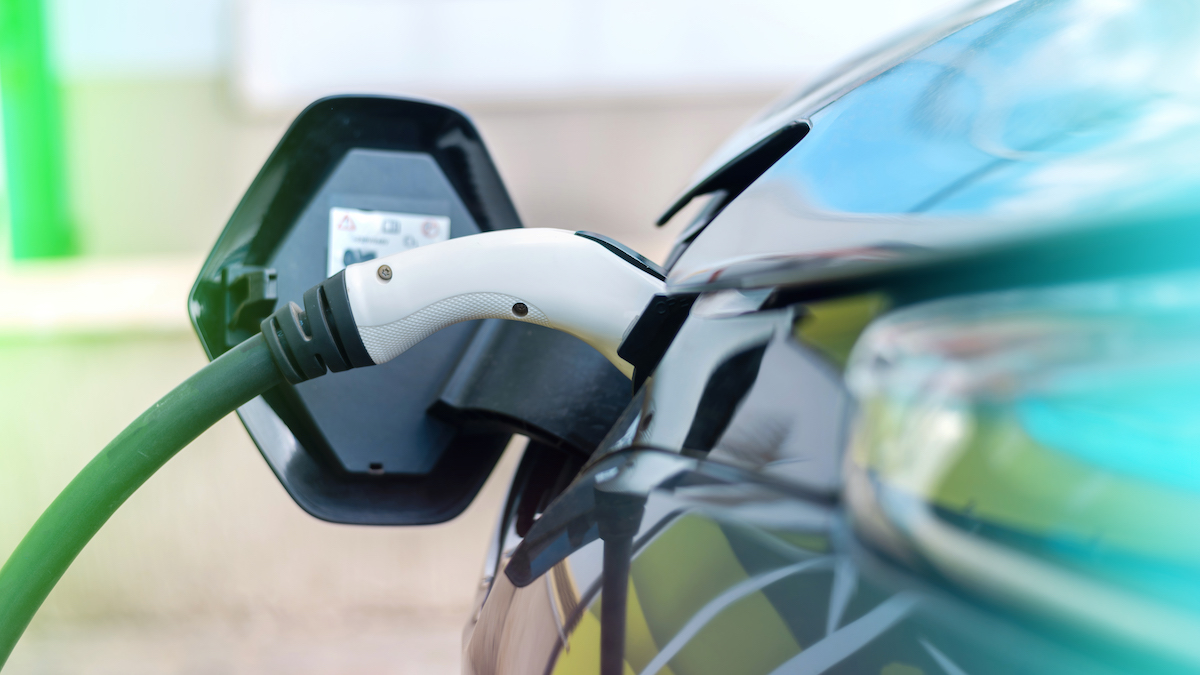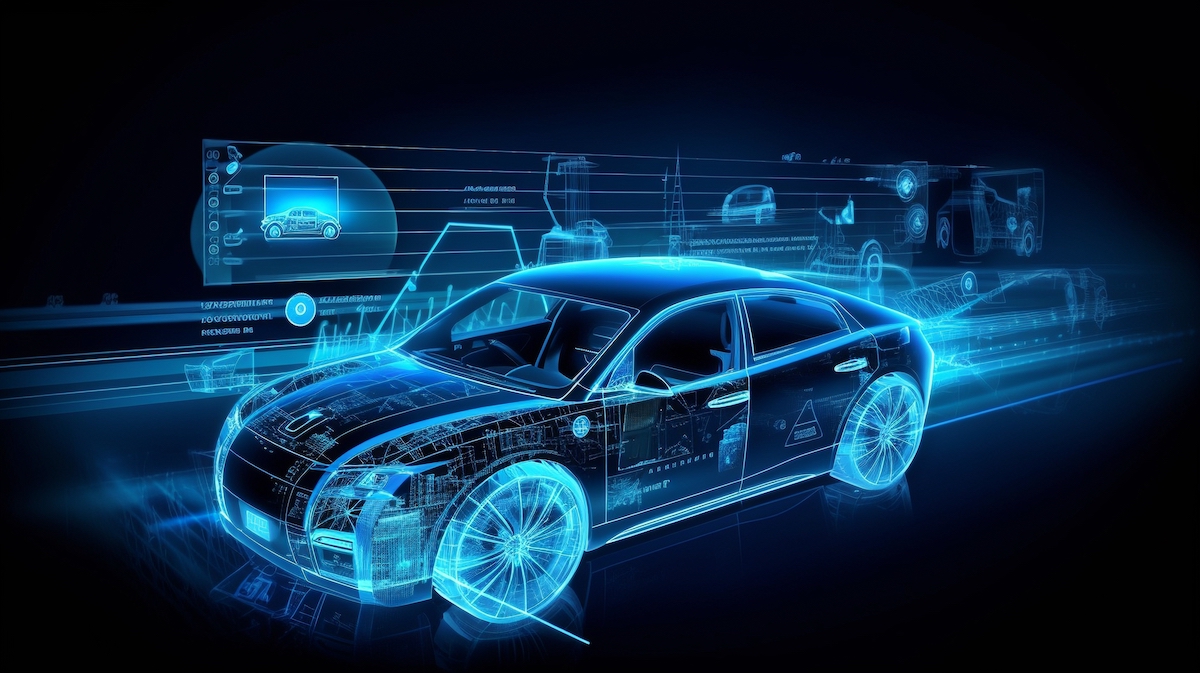Auto and Grid Clouds Collide to Speed Electrified Transportation
When it comes to the future of electric vehicles, many people believe “the sky is the limit.” A more accurate statement might be, “the cloud is the limit.”
Where traditional automobiles that run on fossil fuels release copious amounts of CO2 emissions, electronic vehicles or EVs produce a large amount of another, more eco-friendly substance: data.
Some people have pegged the amount of data that a connected EV could generate at 32TB a day. To put that into perspective, in one day, three EVs could produce as much data as the total amount of information the United States Library of Congress makes available online.
Right now, electric cars are a boon for the environment, but a challenge to the power grid. EVs increase demand for power in unpredictable ways. As electric buses, trains and passenger vehicles come to dominate transportation in the future, the utility power grid will need to be more reliable and predictable to keep everything moving.
Because of the interplay between EVs, utilities and data, the path to electrified transportation will depend on successfully, selectively and carefully merging automotive-generated data from an “auto cloud” with utility-generated data from the “grid cloud.”
Clever engineering approaches will help. Cars that stop at red lights will get a boost from induction chargers in the pavement, similar to the jolt that electric buses now get from cantilever arms at bus stops. Self-driving cars necessitate that they be electric, since self-drive ICE (Internal Combustion Engine) vehicles cannot stop and refill themselves at gas stations. EVs can drive themselves to a charger, and soon will be able to self-charge. They will depend on being wirelessly charged from the floor of anyplace they park. This is as much a data management problem as it is electric: The automatic, on-road charging means the car, driver and their credentials must be instantly recognized, registered, verified and billed before the charging can happen. Couple that with the hundreds of different combinations of hardware and standards used by EV manufacturers and the different charging systems (and battery packs) they use, and the complexity becomes clear.
The Cloud Connection
These engineering approaches will depend on better use of data to understand the best places to put those chargers. This is not a what-if scenario: It is happening today. Hitachi Vantara is partnering with the city of London and UK Power Networks on Optimise Prime, the largest commercial EV trial. The initiative uses internet-of-things (IoT) technology to track the charging activity of up to 3,000 commercial vehicles. The project is estimated to save 2.7 megatons of carbon dioxide and £200 million a year.
EV automotive companies are working closely with their electrical utility providers to collaborate and cooperate better. As their data exchanges and cohesion grows, it will lead to new revenue models and many exciting value propositions.
If an EV maker allows the electric utilities to sip power out of a parked EV’s batteries for credit, perhaps one day the EV maker can have an additional source of revenue courtesy of the grid and the EV owner. Maybe the EV maker will lease the car to an owner for free. Or maybe the EV owners could be incentivized to charge under solar-canopy parking lots in the middle of the day, when the power grid is not stressed by demand.
As these datasets merge and inevitable collaboration increases, complex data issues will need to be confronted.
The Optimise Prime project uses hundreds of different databases and data formats. All that information must be collected, organized, cleansed, analyzed and viewed in a secure manner. This requires complex calculations about the benefits and costs of using public, private or hybrid clouds. Systems architects will need to decide which data must be analyzed quickly on the edge and what can be analyzed later, and set up the automatic processes to analyze data as it flows in.
The security aspects of data cohesion between automakers and utility grids will be tricky. Some countries prohibit the data that a vehicle generates from being transferred outside the country. Concern over the General Data Protection Regulation (GDPR), the EU law on data protection and privacy, can cause some car makers to be sensitive about even asking car owners for permission to share information from their vehicles. While this is understandable, unnecessarily limiting the flow of data could negatively impact the expansion of electric vehicles.
For example, an EV manufacturer recently had to recall its vehicles because some EV batteries caught on fire. As with many complex products today, the battery was manufactured in a different location than most of the car components. There is a tremendous amount of data generated by the car (temperature increases, environmental conditions) that could provide the battery maker with clues about how to correct the mistake, but they don’t usually have access to that data or regulatory rules prevent timely sharing of such data.
The lack of data sharing hinders technology development and the quality and safety of our transportation, which affects everyone. Legislators must consider how to protect personally identifiable information, while providing enough data to different stakeholders to develop and expand the EV infrastructure.
Reshaping How We Experience Transportation
As more data is harnessed, the information could dramatically reshape how we experience vehicles. In Baton Rouge, Louisiana, passengers on the city’s electric buses use apps to receive information about bus locations and offers about selecting a different route for a discounted fare.
The way that automobiles and transportation are used in the future will have significant implications for data sharing. As self-driving cars are perfected, consumers will have many options on how to use them, such as subscription models — say, a flat monthly rate of $300 for 30 rides a month of up to 10 miles each. But as we enter this new age, let’s also keep something front of mind: Development of those models will hinge on data.
In short, the EV infrastructure depends on all parties being able to collect, analyze and share their data effectively. Closely cofunctioning “clouds” for automotive data and utility data will be two lanes on the same highway toward sustainability.
Originally this article was published here.



